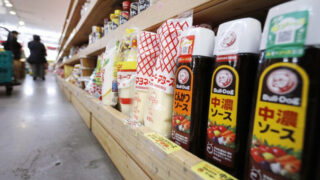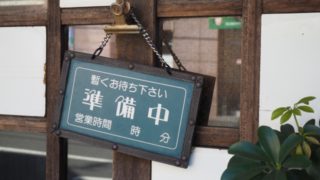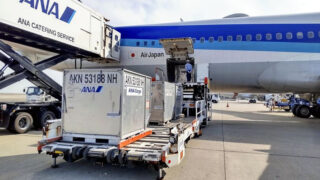100円ショップは、日本の消費者にとって大事な購入先です。
日本では、長い間デフレが続いており、その中で、安く生活用品を買える100円ショップは、いろんな人の商品購入のための味方です。
しかし、最近の原材料の高騰と、円安によって、100円ショップの経営が厳しくなっている現状があるようです。
今日はこの話題を取り上げようと思います。
まずは記事全体を読んでみたいと思います。

原材料費の高騰と、円が米ドルに対して20年ぶりの歴史的な安値まで下落したことと相まって、日本の物価は上昇しました。
Japan’s consumer price index (CPI) for April rose by 2.1% from the previous year, the Ministry of Internal Affairs and Communications announced May 20. This marks the largest increase in over 13 years since September 2008, excluding effects of the consumption tax hike, and consumers’ daily lives are being impacted.
日本の4月の消費者物価指数(CPI)は前年比2.1%上昇したと総務省は5月20日に発表した。これは消費税引き上げの影響を除いて、2008年9月以来13年間で最大の上昇であり、そして消費者の日常生活は影響を受けています。
During Japan’s prolonged period of deflation, 100-yen stores — equivalent to dollar stores — expanded quickly. They have consistently posted high sales figures and their store numbers have continued to grow over the past decade, and the market is about to reach 1 trillion yen, or roughly $7.82 billion. But the business model is facing a major turning point.
日本の長期にわたるデフレの中で、100円ショップ(ドルショップに相当)は急速に拡大しました。売上高は一貫して高く、過去10年間で店舗数は伸び続けており、市場は1兆円(約78.2億ドル)に迫っています。しかし、ビジネスモデルは大きなターニングポイントに直面しています。
Of the some 10,000 products handled at the shops, 90% are imported. As import costs rise amid the spike in raw material prices and the weak yen, the only way to sell products at 100 yen is to buy stock at lower prices. However, managing director of 100 yen shops said that distributors say they, too, are in a pinch and can’t cut prices any further.
店舗で取り扱っている約1万点の商品のうち、9割が輸入品です。原材料価格の高騰と円安のなかで輸入コストが上昇する中、100円で売る唯一の方法は、より安い価格で在庫を買うことだ。しかし、100円ショップの代表取締役社長は、流通業者も彼らもピンチ状態にあり、これ以上値下げできないと述べている。
100-yen shops sell a rich variety of cheap daily items, from food and tableware to stationery and toys, and so are both very popular and a necessity for consumers. However, one industry source said that more shops have been cutting products as many of them are no longer profitable when considering the wholesale price.
100円ショップでは、食料品や食器から文房具やおもちゃまで、さまざまな安価な日用品を販売しているため、非常に人気があり、消費者の必需品です。しかし、ある業界筋によると、卸売価格を考えると、多くの店がもはや利益を上げていないため、より多くの店が製品を削減しているという。
では、1文ずつ文章を細かく見ていこうと思います。
原材料費の高騰(raising raw material costs)と、円が米ドルに対して20年ぶりの歴史的な安値まで下落したことと相まって(coupled with the yen’s historic drop to a two-decade low)、日本の物価は上昇しました(have driven up prices in Japan)。
日本の物価が最近上がっています。
その原因は、原材料費の高騰と円安。
これらの要因が相まって、日本の物価が上がっている。
“coupled with the yen’s historic drop to a two-decade low”で「20年ぶりの歴史的な安値まで下落したことと相まって」と訳しています。
“couple with ~”は「~と相まって」という意味です。
日本の4月の消費者物価指数(CPI)は前年比2.1%上昇した(rose by 2.1% from the previous year)と総務省は5月20日に発表しました(the Ministry of Internal Affairs and Communications announced May 20)。
これは、消費税引き上げの影響を除いて(excluding effects of the consumption tax hike)、2008年9月以来13年間で最大の上昇であり、そして消費者の日常生活は影響を受けています(consumers’ daily lives are being impacted)。
日本の4月の消費者物価指数は前年比2.1%の上昇。
消費者物価指数とは、「消費者物価指数は、全国の世帯が購入する家計に係る財及びサービスの価格等を総合した物価の変動を時系列的に測定するもの」ということです。
これは、消費税値上げの影響を除いて過去13年間で最高。
これによって、家計は直接的な影響を受けることになっています。
“excluding effects of the consumption tax hike”で「消費税引き上げの影響を除いて」と表現しています。
“excluding ~”で「~を除いて」という意味。”except”でも代用できると思います。
日本の長期にわたるデフレの中で(during Japan’s prolonged period of deflation)、100円ショップ(ドルショップに相当(equivalent to dollar stores))は急速に拡大しました(expanded quickly)。
売上高は一貫して高く(have constantly posted high sales figures)、過去10年間で店舗数は伸び続けており(their store numbers have continued to grow over the past decade)、市場は1兆円(約78.2億ドル)に迫っています。
しかし、ビジネスモデルは大きなターニングポイントに直面しています(is facing a major turning point)。
日本は、長期間にわたるデフレが続く中で、100円ショップは急速に拡大してきた。
最初は、「安かろう悪かろう」というような感じでしたが、どんどん品数も品質も向上して行って、今では何かを買う時にとりあえず100円ショップにないかを確認するぐらいになりました。
市場は1兆円規模だそうです。
“during Japan’s prolonged period of deflation”で「日本の長期にわたるデフレの中で」と訳しています。
“during ~”は「~の間」という意味ですね。”amid”を使っても同じような意味で表現できると思います。
店舗で取り扱っている約1万点の商品のうち、9割が輸入品です(90% are imported)。
原材料価格の高騰と円安の中で輸入コストが上昇するなか(as import costs rise amid the spike in raw material price and the weak yen)、100円で売る唯一の方法は(the only way to sell products as 100 yen)、より安い価格で在庫を買うことです。
しかし、100円ショップの代表取締役社長は、流通業者は彼らもピンチ状態にあり、これ以上値下げできないと言っています(distributor say they, too, are in a pinch and can’t cut prices any further)。
100円ショップの約1万ある商品のうちの約9割が輸入品。
原材料の高騰と円安で、これから輸入するものは高くなってしまいます。
そうすると、一番安く仕入れる方法は、現在、日本にある在庫を安く買うこと。
でも、その在庫を抱えている流通業者も、同じようにピンチの状況にあるため、これ以上は値下げできないと言っている。
なので、100円ショップは同様にピンチの状況に陥っています。
“the only way to sell products as 100 yen”で「100円で売る唯一の方法は」と表現しています。
“the only way to ~”で「~する唯一の方法は」という表現は、英語でよくある表現方法ですね。
100円ショップでは、食料品や食器から文房具やおもちゃまで、さまざまな安価な日用品を販売している(sell a rich variety of cheap daily items)ため、非常に人気があり、消費者の必需品です(are both very popular and a necessity for consumers)。
しかし、ある業界筋によると、卸売価格を考えると(when considering the wholesale price)、多くの店がもはや利益を上げていないため(as many of them are no longer profitable)、より多くの店が製品を削減している(more shops have been cutting products)と言います。
100円ショップには、さまざまな商品が売られている。
しかも、基本的にすべて100円という安い値段です。
そのために、非常に人気があり、消費者の必需品となっている。
でも、今日の記事で見てきたように、卸売価格の高騰を考えると、もはや利益が出ない商品が増えていっている。
そのため、100円ショップでは、利益の上がらない商品については、削減するようになっている。
そのように、卸売関係者は話しているということです。
“as many of them are no longer profitable”で「多くの店がもはや利益を上げていない」と訳しています。
“no longer”は「もはや~でない」という意味です。
ここでの”as”は「~なので」という意味。
今日は、100円ショップが原材料の高騰と円安で厳しい経営状況になっているとの話題を取り上げました。
今日も最後まで読んでくださって、ありがとうございました。
こうぷー


























































































































コメント